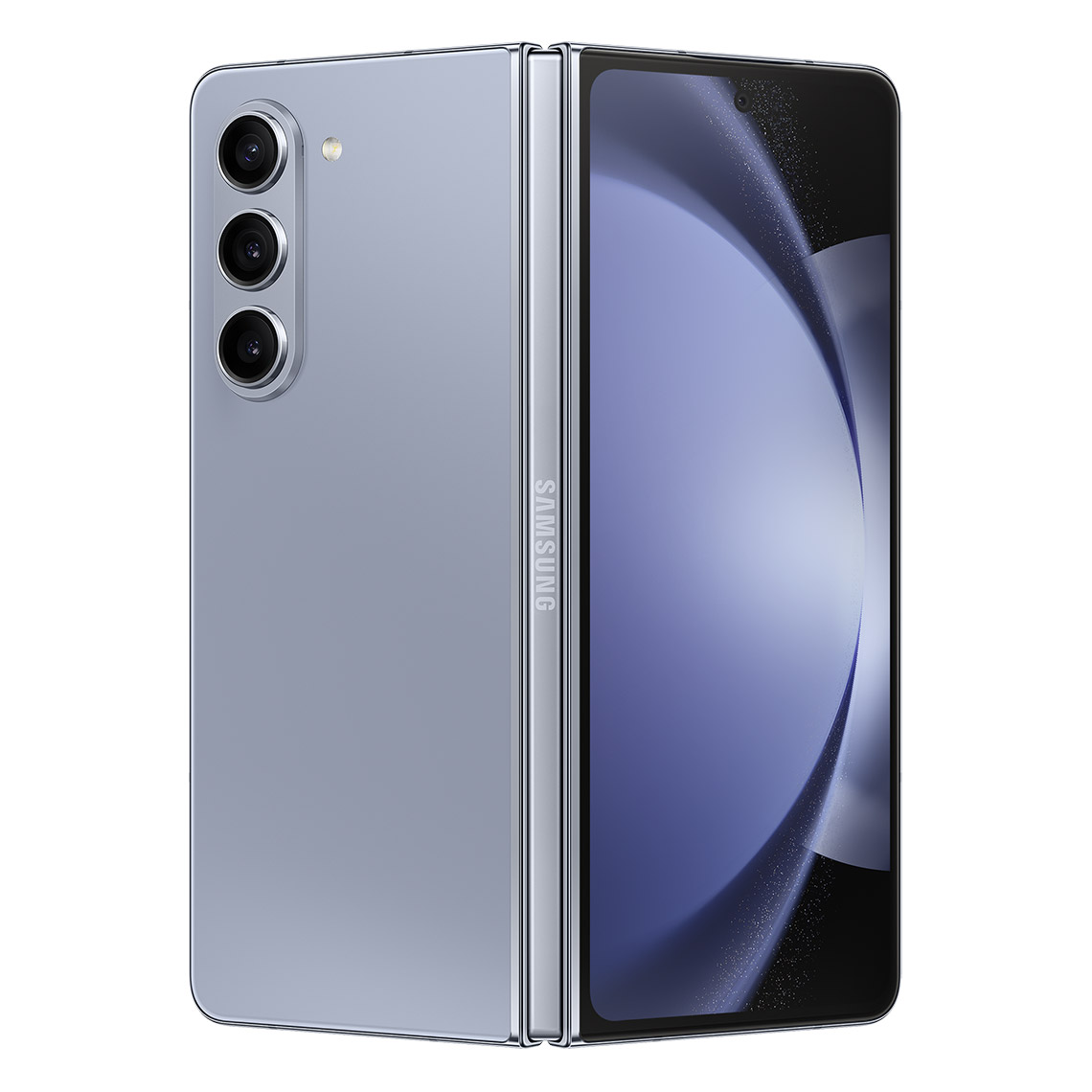
The Samsung Galaxy Z Fold 5 is a worthy successor to the Z Fold 4, bringing a flatter and lighter profile to an otherwise-familiar foldable formula.
Pros
- It folds flat
- Lighter and thinner
- Even snappier performance
Cons
- Cover screen now feels too narrow
- The cameras are good but unchanged
- Should include the S Pen
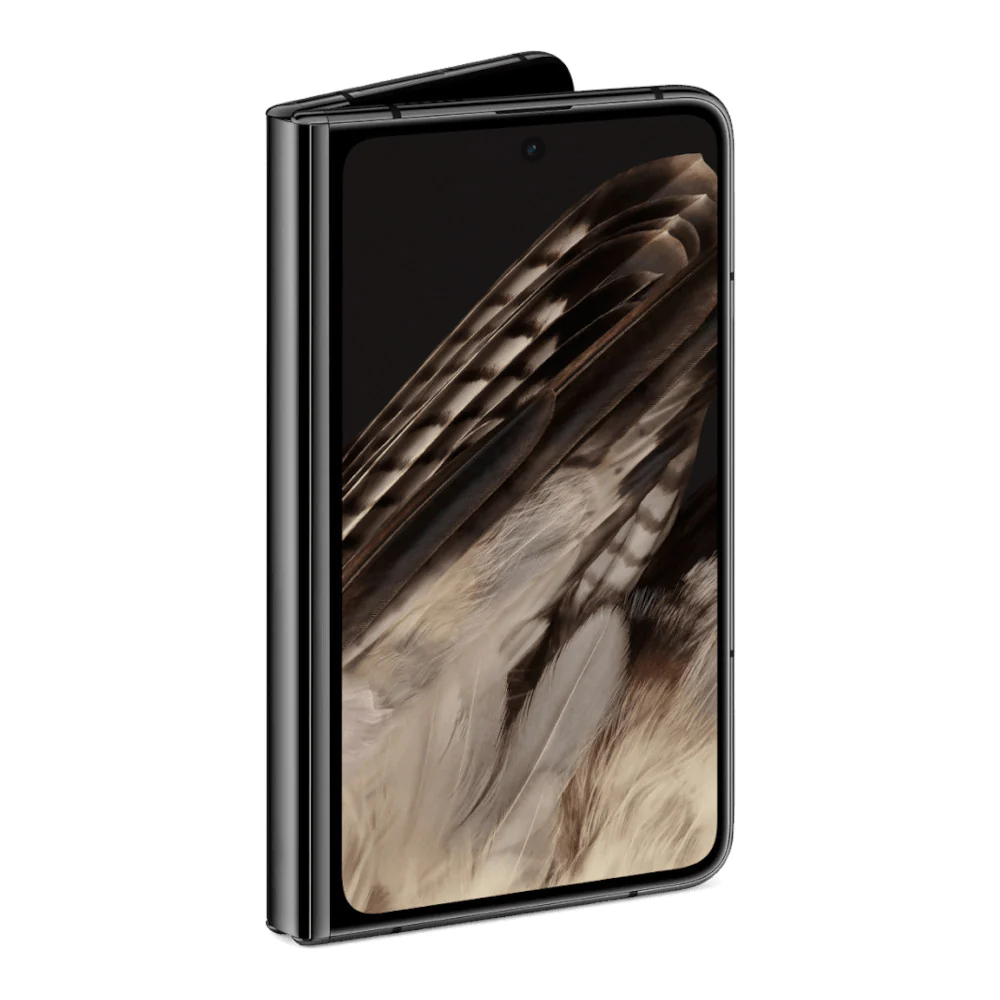
The Google Pixel Fold is an excellent, multidimensional handset that feels equally at home as a beefy smartphone or a pint-sized table.
Pros
- No-compromises front screen
- Excellent construction
- Great-looking big screen
- Excellent cameras
Cons
- Huge bezel around the tablet screen
- Takes a little push to lie flat
- The price takes some explaining
With the launch of the Google Pixel Fold, Samsung finally has a heavyweight rival in the full-sized foldable market. But has the newly released Samsung Galaxy Z Fold 5 been able to snatch the advantage right back?
You'll find our full verdicts on both phones in our Google Pixel Fold review and Samsung Galaxy Z Fold 5 review, but in this article, we pit the two devices against one another directly.
Below, you'll find comparisons between each phones' respective specs, designs, displays, cameras, chipsets and prices. We've included some final thoughts, too, to help you decide which flagship foldable is more up your street.
Samsung Galaxy Z Fold 5 vs Google Pixel Fold: specs comparison
| Galaxy Z Fold 5 | Google Pixel Fold | |
|---|---|---|
| Display: | 7.6-inch OLED / 6.2-inch OLED | 7.6-inch OLED / 5.8-inch OLED |
| Resolution: | 1812 x 2176 pixels / 904 x 2316 pixels | 1840 x 2208 pixels / 1080 x 2092 pixels |
| Refresh rate: | 120Hz | 120Hz |
| Chipset: | Snapdragon 8 Gen 2 | Google Tensor G2 |
| Rear cameras: | 50MP wide, 12MP ultra-wide, 10MP telephoto w/ 3x optical zoom | 48MP wide, 10.8MP ultra-wide, 10.8MP telephoto w/ 3x optical zoom |
| Front camera: | 10MP and 4MP | 8MP and 9.5MP |
| RAM: | 12GB | 12GB |
| Storage: | 256GB, 512GB, 1TB | 256GB, 512GB |
| Battery: | 4,400mAh | 4,821mAh |
Samsung Galaxy Z Fold 5 vs Google Pixel Fold: price and availability
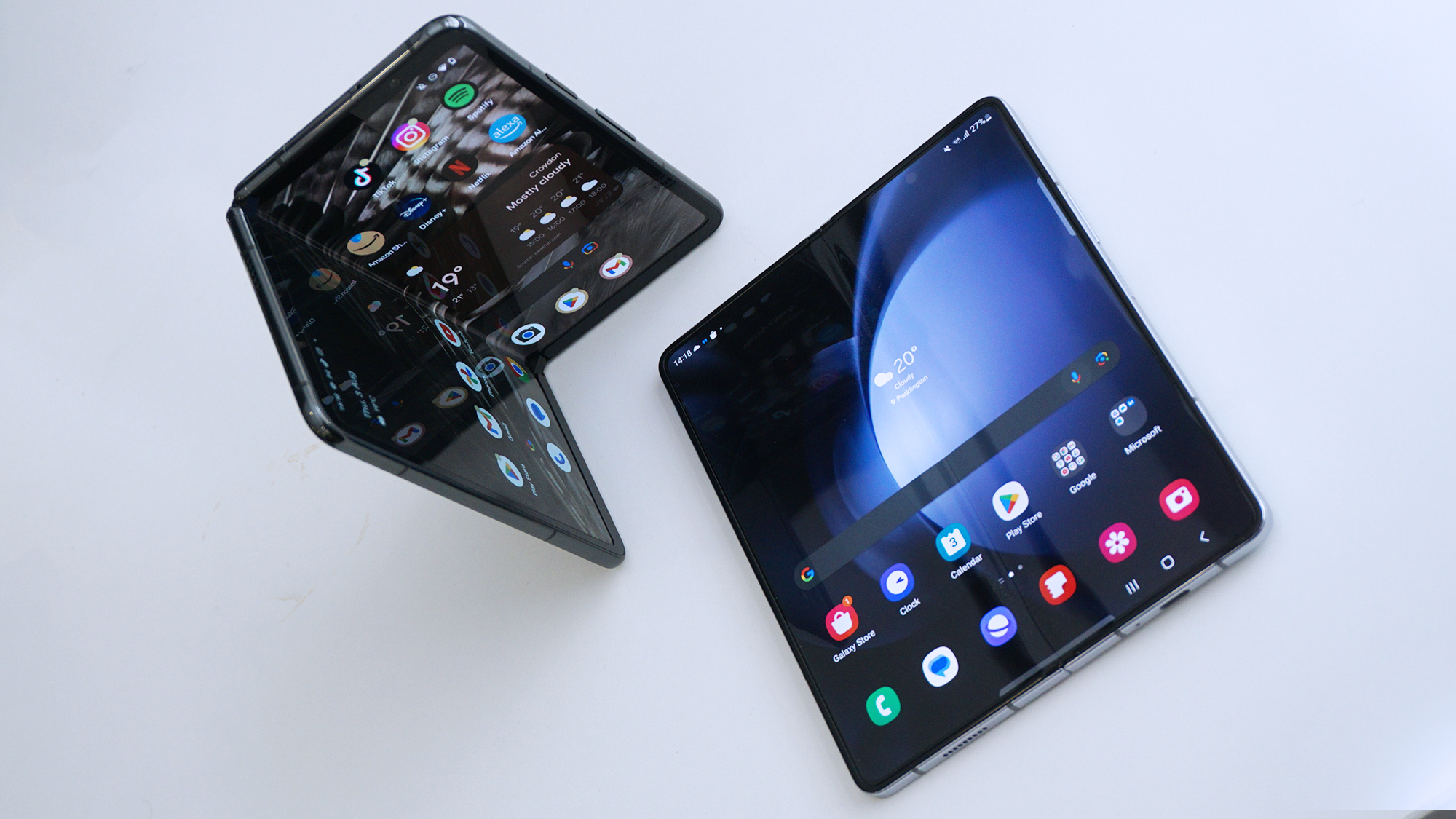
Google’s Pixel Fold started shipping on June 27, 2023. Pricing starts at $1,799 / £1,749 (around AU$2,655) for the 256GB model, while the 512GB model costs $1,919 / £1,869 (roughly AU$2,835).
The Galaxy Z Fold 5 was announced on July, with a full rollout following on August 11. It costs $1,799.99 / £1,649 / AU$2,599 for 256GB of storage, $1,919.99 / £1,869 / AU$2,799 for 512GB, and $2,159.99 / £2,049 / AU$3,149 for 1TB.
In other words, the Galaxy Z Fold 5 hits pretty much the same price points as the Pixel Fold. The first round is a draw.
Samsung Galaxy Z Fold 5 vs Google Pixel Fold: design
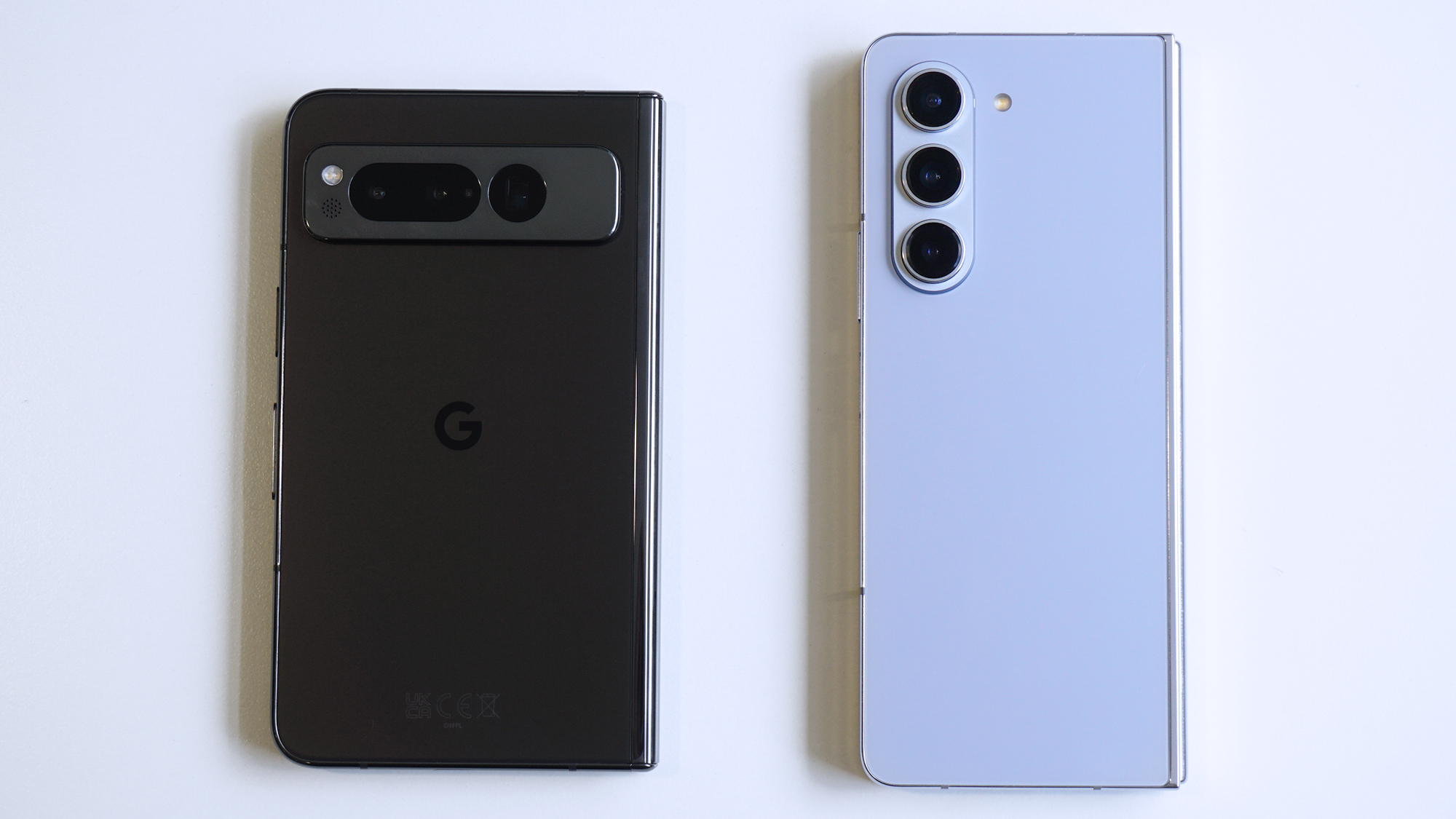
While these are two full-sized foldables with expansive, square-ish 7.6-inch displays, the fine detail of their designs differs quite considerably.
Sign up for breaking news, reviews, opinion, top tech deals, and more.
When closed up, the Pixel Fold almost resembles a ‘normal’ phone, with an external display that sports a similar aspect ratio to a non-foldable phone. Samsung’s approach tends to make the external display much taller and thinner, and this holds true in the Fold 5.
The key driver behind those different approaches is the internal display, with Samsung making its fully extended screen slightly taller than it is wide, and Google taking the opposite approach. For our money, Google’s way is better – think about the approach taken by all the other big screens in your life – but opinion varies.
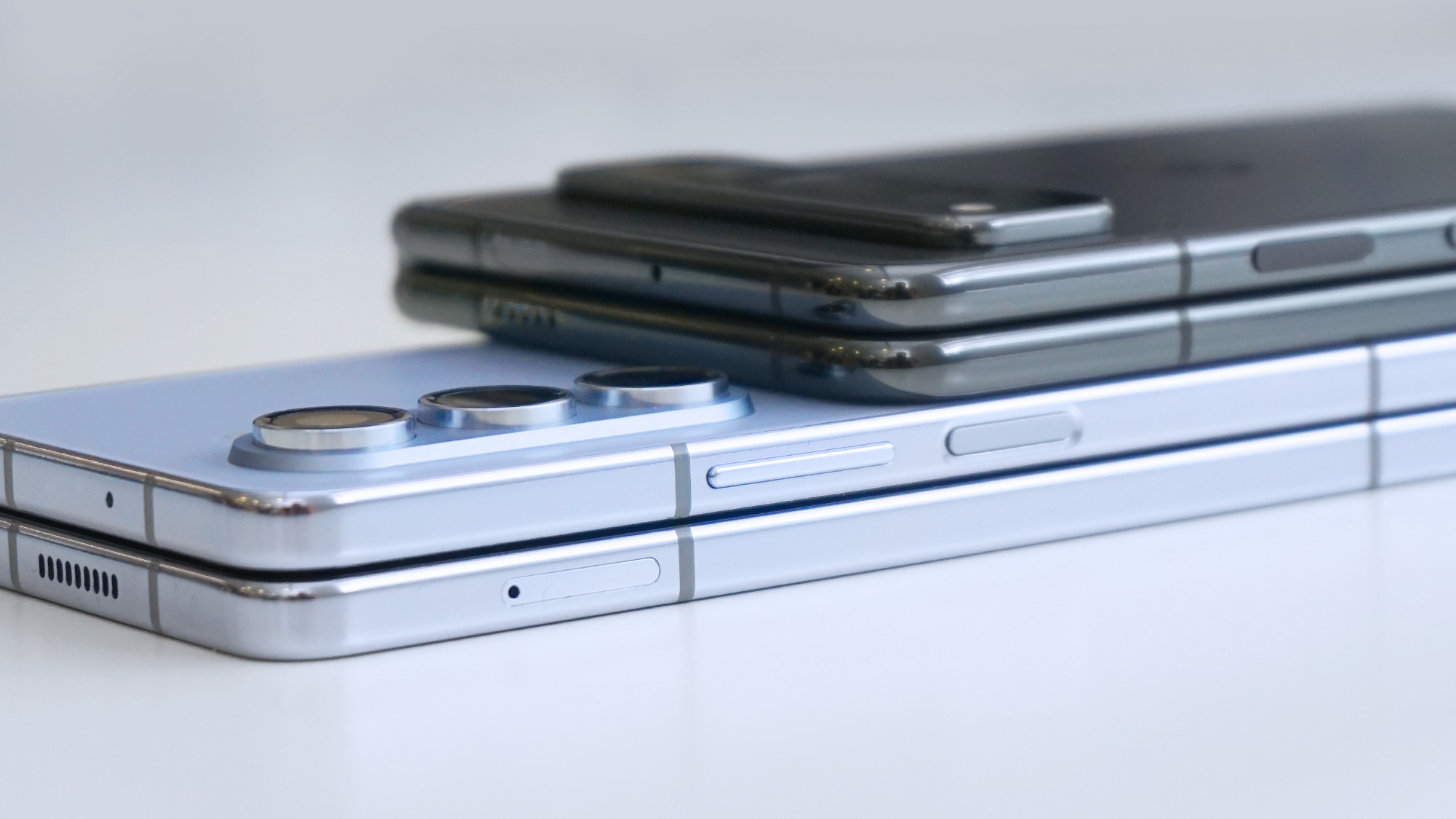
Google’s foldable is a mere 12.1mm thick when closed, which is extremely thin for a foldable. It achieves this with a clever hinge design that allows the two halves to lay flat, and by making the two halves thinner (just 5.8mm) through expanding the bezels and thus spreading those internal components out more.
Samsung too holds true to its approach of creating slightly thicker foldables with thinner bezels. The Fold 5 turned out to be a little thinner than the Fold 4, but it certainly doesn't rival the Pixel Fold on this front. At the same time, the Fold 5 is 30g lighter than its rival, with a weight of 254g set to dramatically undercut the 283g Pixel Fold.
Though Samsung has adopted a new waterdrop hinge mechanism that enables the Fold 5 to close flat, its screen crease still remains quite prominent.
Samsung also matches the Pixel Fold with an IPX8 rating. In other words, both foldables are water-resistant, but not dust-resistant.
Samsung Galaxy Z Fold 5 vs Google Pixel Fold: display
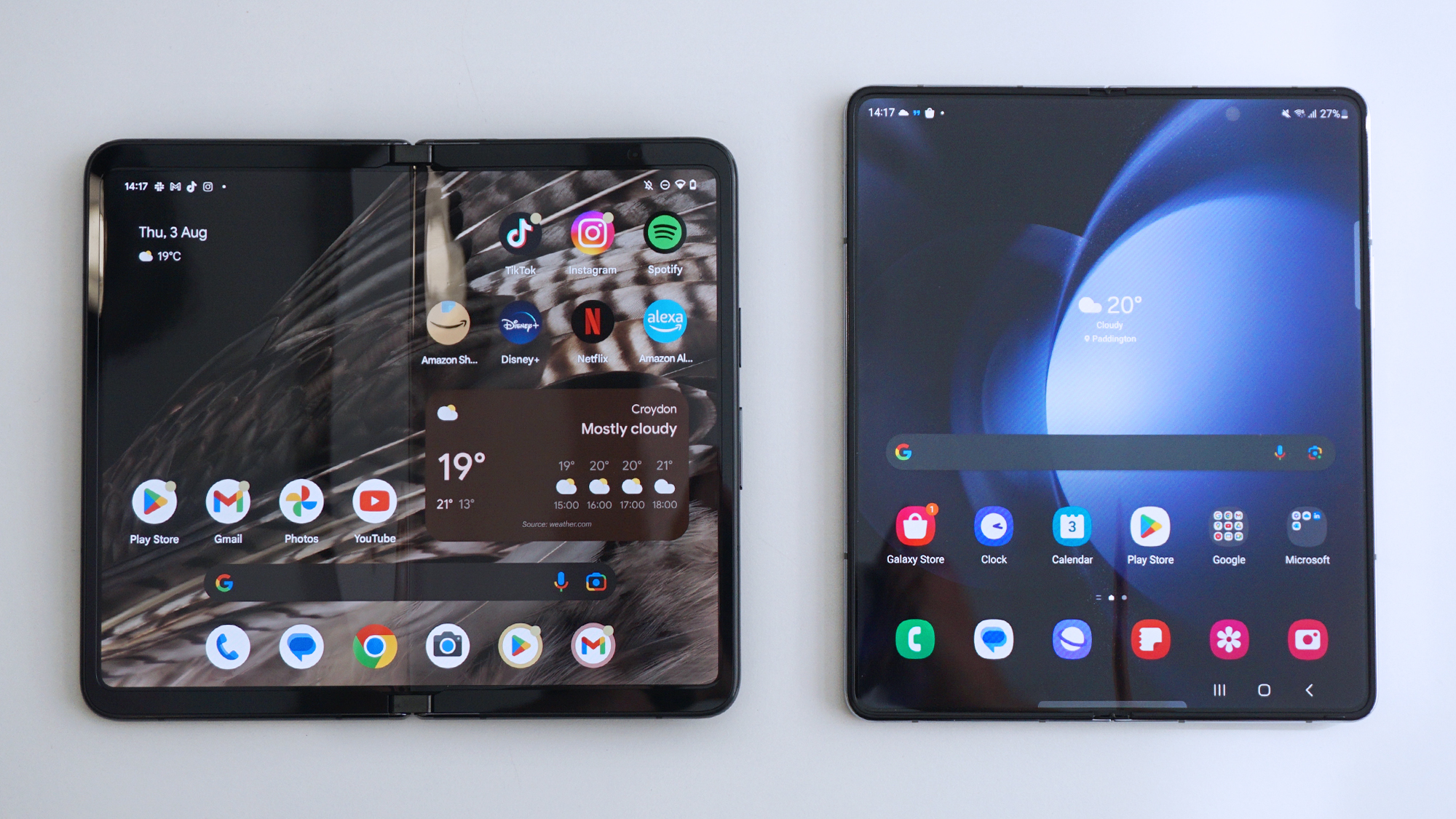
As we’ve just mentioned, there’s a fundamental difference in the way these two foldable manufacturers approach their displays.
The Fold 5 has a weirdly tall and skinny 6.2-inch OLED external screen with a 2316 x 904 resolution and a 120Hz refresh rate. The Pixel Fold uses a far more conventional 5.8-inch OLED screen with a 2092 x 1080 resolution. It’s shorter and wider, making it more like a regular phone when closed.
Internally, both phones have 7.6-inch 120Hz OLEDs, but whereas the 1840 x 2208 Pixel Fold is more naturally geared towards landscape content, the 2176 x 1812 resolution of the Fold 5 stands taller.
The Pixel Fold internal screen gets a little brighter than last year’s Fold 4 – at 1,450 nits versus 1,200nits. Samsung cranks that brightness up to 1,750 nits, over 30% more than the Fold 4.
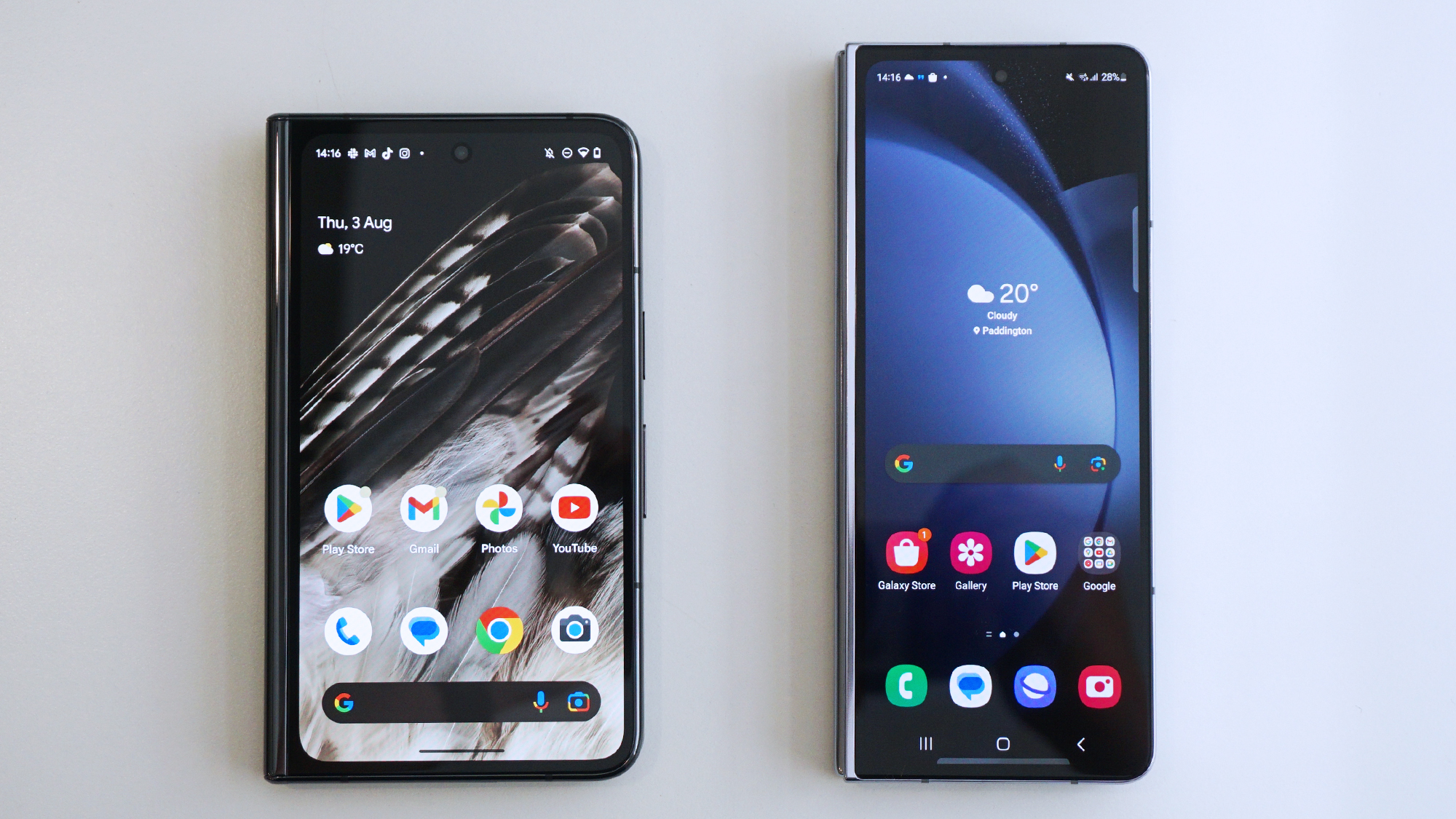
Both of these foldables are eminently bendable and posable, letting you use their displays in various configurations. However (and this is a software thing as much as anything else), Samsung’s UI allows you to make better use of that large screen from a productivity standpoint, especially when opening multiple apps side by side (by side).
All in all, we’d give Google the edge here on the alignment of its screens, while the Fold 5 is likely to make better use of those screens through its well-established foldable UI.
One feature that will give the Fold 5 an edge in the eyes of some users is S Pen support. You're able to use a special version of Samsung’s stylus to scrawl on the Fold 5’s big, beautiful screen, giving it a major creativity and productivity boost too. It would sure help Samsung’s cause if it opted to bundle one in with every Fold 5, but the company just can't decide where to put it, it would seem.
Samsung Galaxy Z Fold 5 vs Google Pixel Fold: cameras
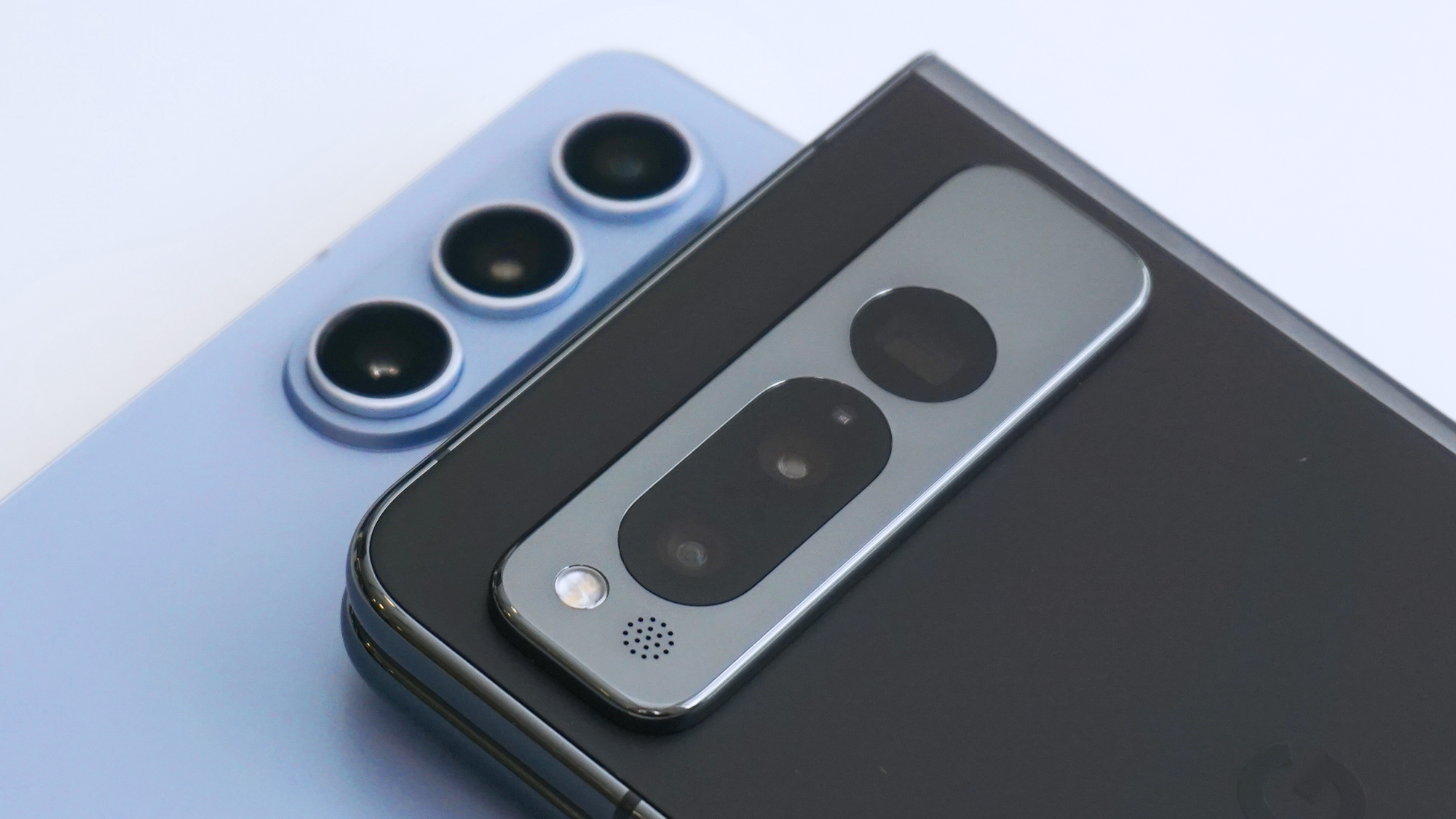
You don’t turn to foldables if camera quality is your top priority, but both of these foldables acquit themselves well in a direct face-off.
The Pixel Fold is a known quantity at this point, and we concluded that its triple-camera system was “overall excellent”. Thanks to Google’s peerless image processing the 48MP main sensor captures bright, sharp shots in all conditions. Meanwhile, the 10.8MP ultra-wide and 10.8MP 5x telephoto take care of your alternative angles.
The Fold 5’s camera system is the same as the one you'll find on the Fold 4. It comprises a 50MP wide, a 12MP ultra-wide, and a 10MP 3x telephoto camera, and in our review, we described this setup as capable of capturing "lovely (if slightly over-saturated) imagery." Shots taken in portrait mode are particularly strong.
Overall, though, we rate the Pixel Fold's camera setup little higher. In particular, Google beats Samsung on optical zoom, offering 5x over Samsung's 3x magnification. As noted in our review, "Samsung will tout its impressive 30x space zoom capabilities, but photos taken with that digitally-enhanced feature don't hold up that well under close scrutiny. Plus, some of the imagery is a combination of real imagery and what AI understands of your subject."
The selfie camera set-up is slightly different on each phone. The Pixel Fold places a traditional front camera in its thick internal bezel, and Samsung has a 4MP under-display solution. The latter looks great, but isn’t very useful for quality selfies.
Both phones do have selfie cameras for the external displays too. All this is by the by, though, as the foldable nature of both phones lets you use those main cameras within a selfie context.
Samsung Galaxy Z Fold 5 vs Google Pixel Fold: performance
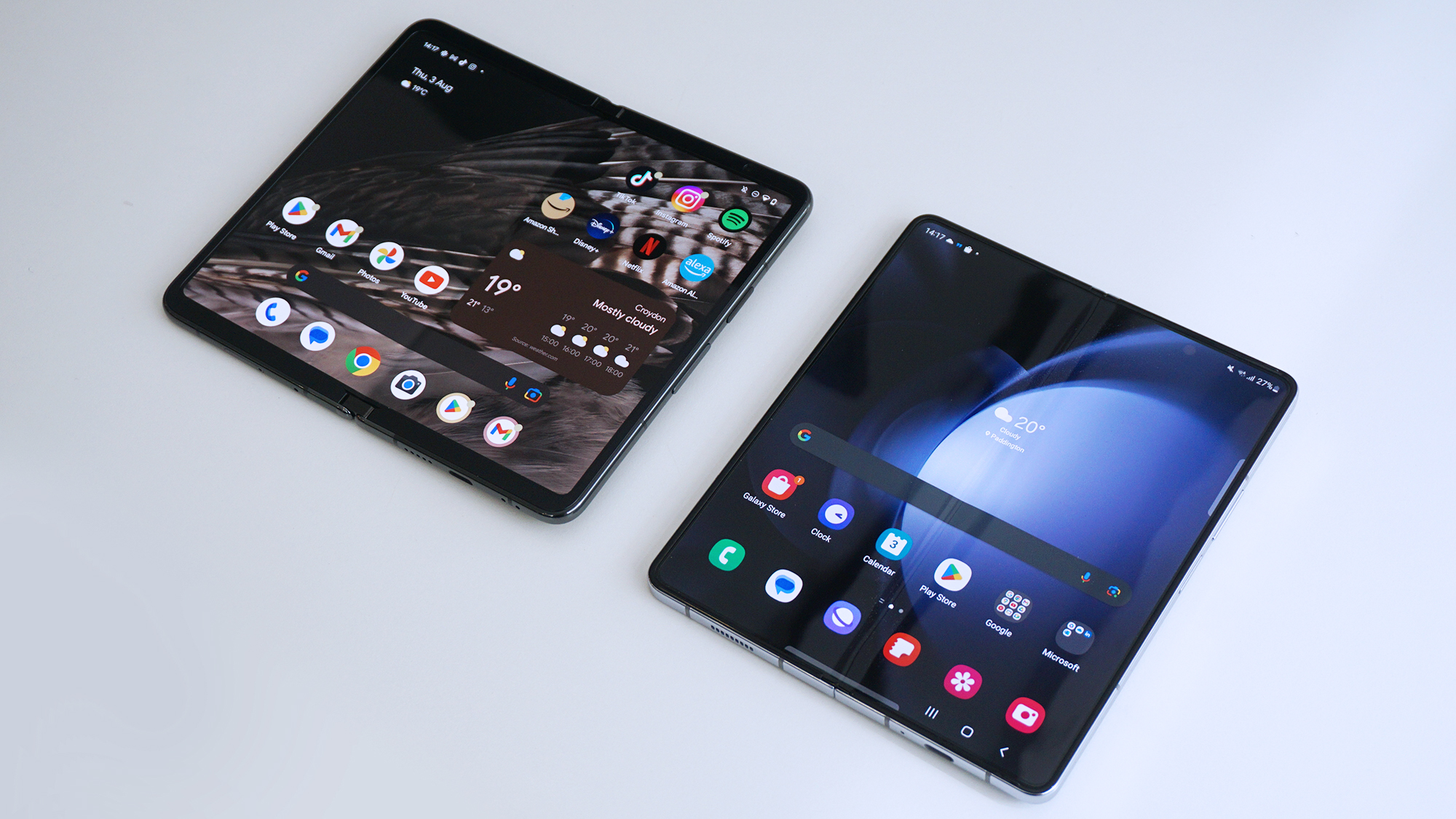
Google’s Pixel Fold gives you the same Tensor G2 chip as can be found in the Pixel 7 range. It’s a capable enough chip, but it’s blitzed by the Fold 5’s Snapdragon 8 Gen 2 for Galaxy processor.
We’ve used both chips extensively across multiple phones, and while the hands-on experience is nigh-on indistinguishable, the Qualcomm chip definitely benchmarks much higher and pushes demanding games along better.
Of course, Google attempts to explain this away by claiming that the Tensor G2’s strength is in AI and machine learning applications. It’s certainly true that the Pixel Fold, like other Pixel phones, can do marvellous things like live transcription and Magic Eraser, the latter allowing you to remove photobombers.
For raw performance, though, the Galaxy Z Fold 5 come sout on top. Indeed, the Pixel Fold isn’t even as impressive as the Galaxy Z Fold 4 with its older Snapdragon 8 Plus Gen 1 chip.
The Galaxy Z Fold 5 also matches the Pixel Fold’s 12GB of RAM. In storage terms, the Pixel Fold comes with 128GB and 512GB storage options. The Galaxy Z Fold 5 gives you that, plus an additional 1TB variant, if you’re ready to splash the cash, so that marks another win for Samsung.
We’ve touched upon some of the software differences between Google’s and Samsung’s foldables already. Overall, Samsung caters better to power users after five successive generations of foldable, while Google’s software is a little more intuitive and easy on the eye.
For the Pixel Fold, Google has essentially rebuilt core apps like Maps, Gmail, Photos, Home, and Drive, and they look great. While multitasking is easy to do, however, it only allows you to run two apps side by side, which feels like a waste of all that glorious space. Samsung is way more productivity focused in this regard.
Samsung Galaxy Z Fold 5 vs Google Pixel Fold: battery
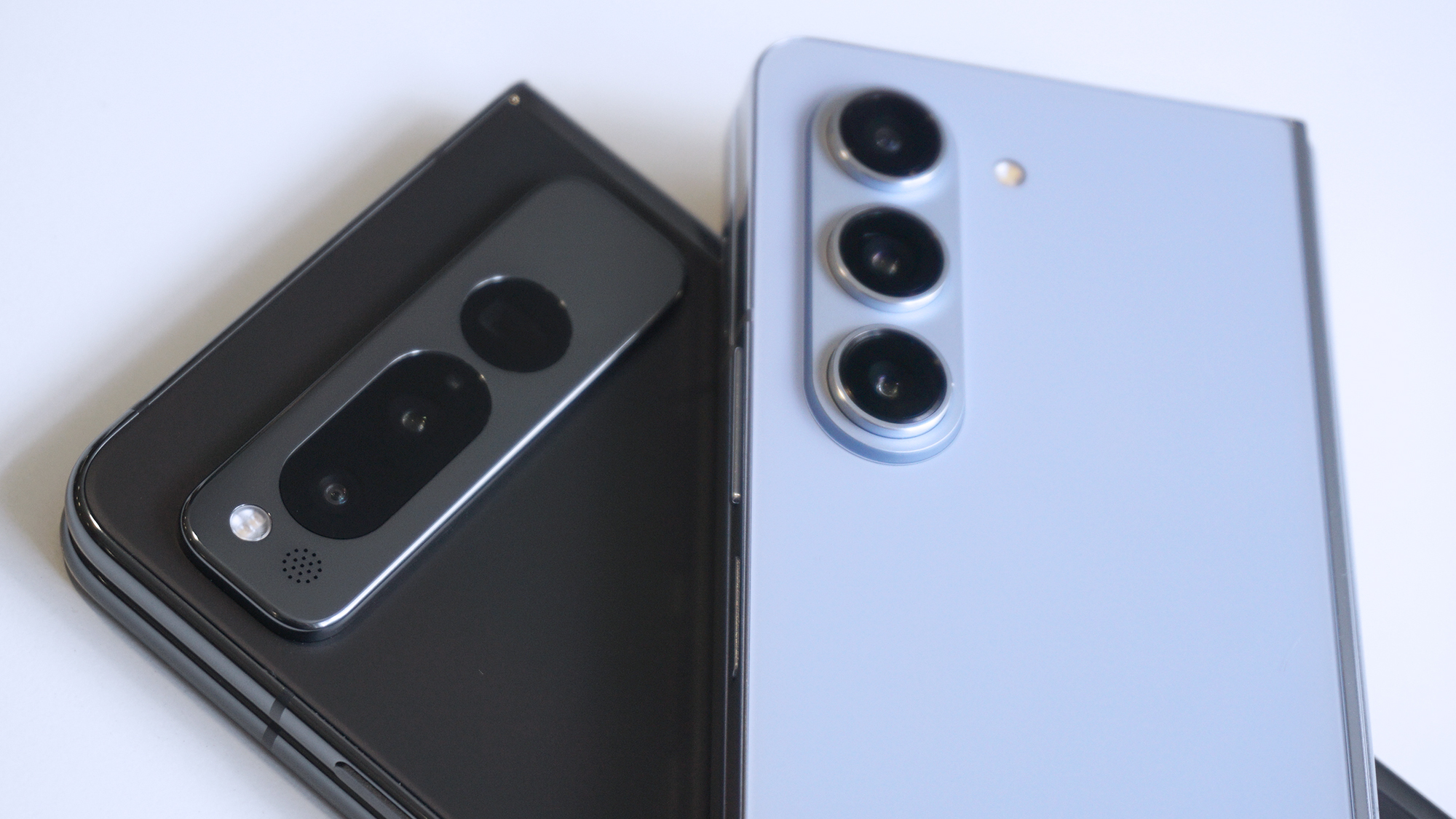
The Samsung Galaxy Z Fold 5 packs the same 4,400mAh battery as the Fold 4, which makes it significantly smaller than the Pixel Fold’s 4,821mAh cell. This is one of the main reasons behind the latter’s unusual weight.
This resulted in strong stamina in our experience with the Pixel Fold, with a solid 15 hours in between charges working out to effectively all-day battery life. The Galaxy Z Fold 4 only lasted 13 hours by comparison.
The superior processor in the Galaxy Z Fold 5, though, meant we got a Pixel Fold-comparable 15 hours of use from Samsung's latest foldable flagship. So, despite packing a smaller battery than the Pixel Fold, the Galaxy Z Fold 5 boasts equally strong battery life.
The Galaxy Z Fold 5 supports both wired and wireless charging, just like the Pixel Fold. Unfortunately, it's similarly slow in both instances too. Last year’s Fold 4 could only hit 25W wired charging and the same is true for the Gold 5. As for the Pixel Fold, it’s probably telling that Google hasn’t been forthcoming about the Pixel Fold’s maximum charging speed.
Samsung Galaxy Z Fold 5 vs Google Pixel Fold: verdict
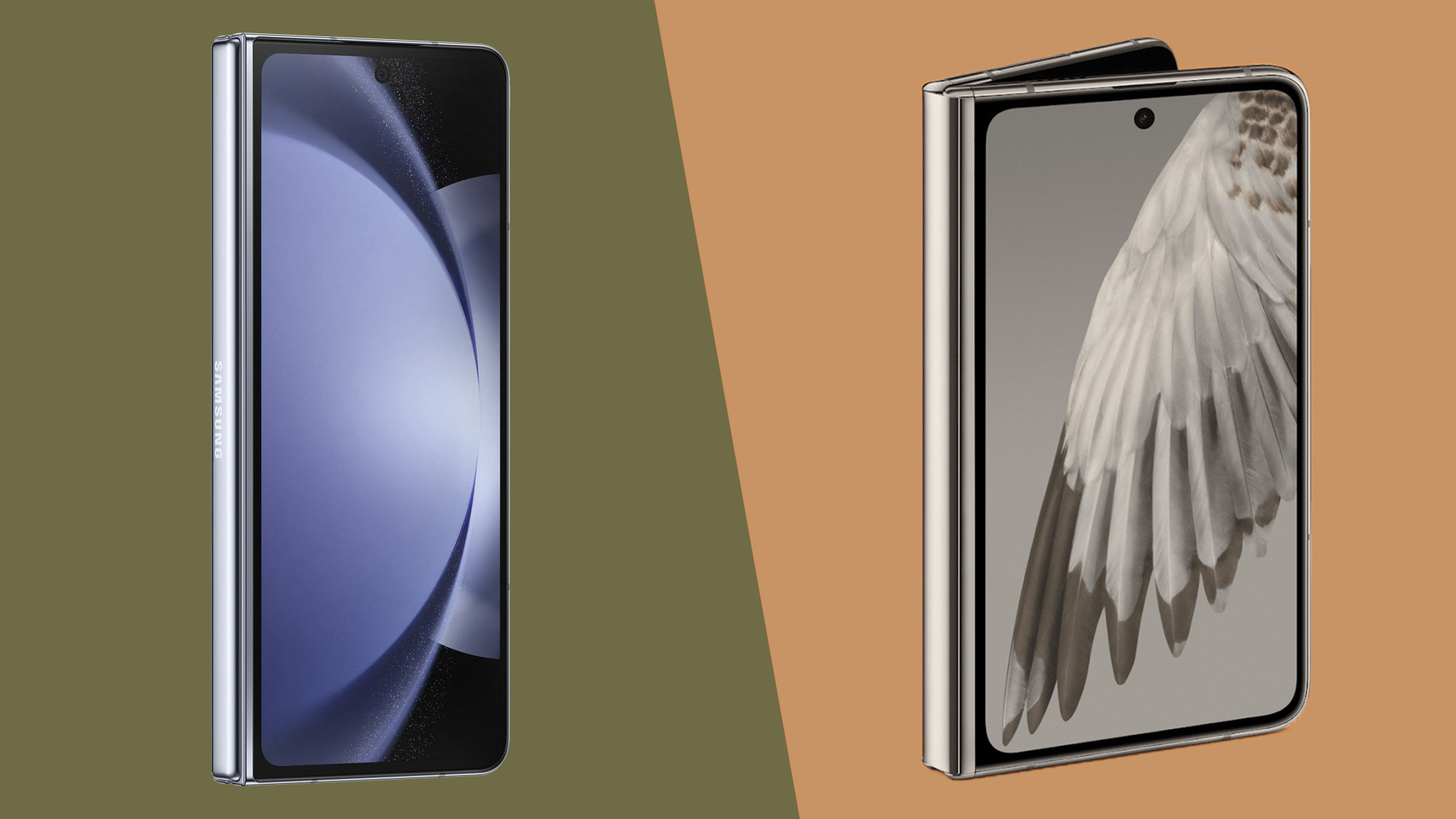
In a straight fight, we’d give the Pixel Fold the nod over last year’s Galaxy Z Fold 4, thanks to its superior camera and its preferable folded-up screen and design.
But for our money, the Samsung Galaxy Z Fold 5 snatches back the lead. As we noted in our review of the latter device, "the Google Pixel Fold has a better cover display, but Samsung's Z Fold 5 is the more refined foldable experience, especially when you unfold it and look at the main screen, which cuts down the bezel and gives you a more expansive display."
It's certainly still a close race – the Pixel Fold remains one of the best foldables around, and its camera hardware is objectively superior – but the Galaxy Z Fold 5 wins on speed, portability and, as above, the finish of the main screen.
Samsung's latest foldable is a better productivity tool, too, what with its more advanced multitasking-friendly UI and its S Pen support.
So, congratulations Samsung, you got your crown back. But Google has definitely entered the flagship foldable game for good, and if you're able to pick up a Pixel Fold for a more reasonable price than Samsung's latest pricey offering, you'll still be getting a supremely impressive piece of mobile kit.

Jon is a freelance journalist who has been covering tech since the dawn of the smartphone era. Besides TechRadar, his words and pictures have appeared in The Telegraph, ShortList, Tech Advisor, Trusted Reviews, Expert Reviews, and more. He largely covers consumer technology, with a particular focus on smartphones and tablets. However, he's also been known to dabble in the worlds of entertainment and video games.
- Axel MetzPhones Editor